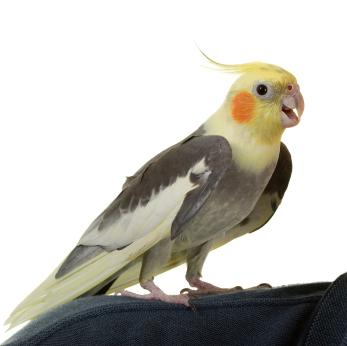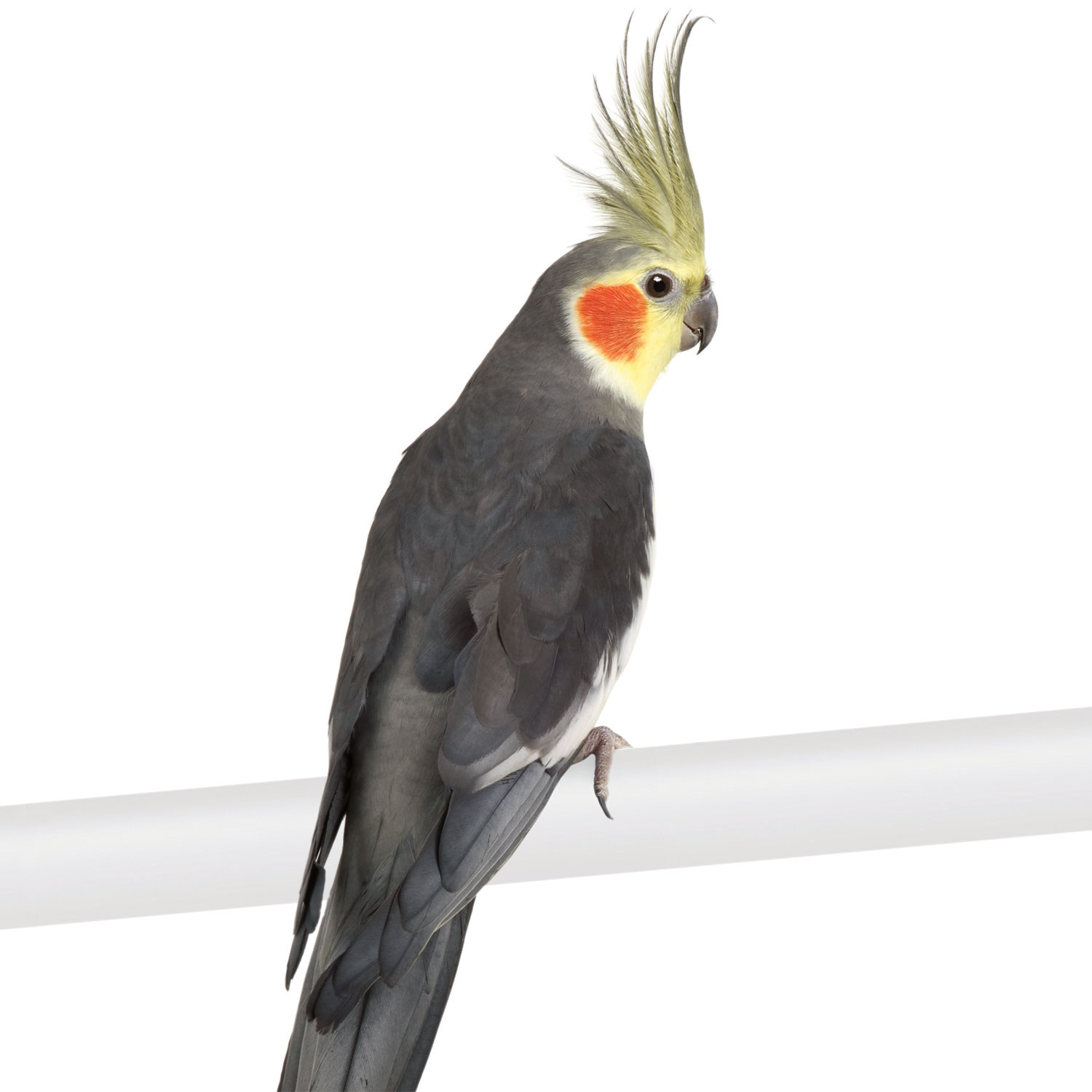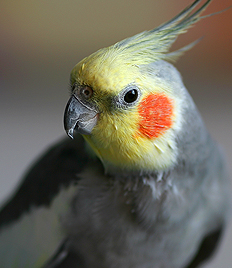
Nymphicus hollandicus
SUBFAMILY
Cacatuinae
TAXONOMY
Psittacus hollandicus Kerr, 1792, New Holland-New South
Wales. Monotypic.
OTHER COMMON NAMES
English: Quarrion, cockatoo-parrot, crested parrot, weero;
French: Calopsitte иlиgante; German: Nymphensittich; Spanish:
Cacatъa Ninfa.
PHYSICAL CHARACTERISTICS
12.6 in (32 cm); 2.6–3.5 oz (75–100 g). Slender bird with long
wings and tail. Gray plumage, raised yellow crest, orange
cheeks, and white wing patch. Males have brighter markings
than females.
DISTRIBUTION
Interior of mainland Australia.
HABITAT
Lowlands; most types of dry, open, lightly timbered country,
including farmlands and parks or gardens; favors trees bordering
watercourses, and avoids dense woodland or treeless plains.
BEHAVIOR
Nomadic in north, migratory in south. Usually in small flocks,
but large flocks at isolated waterholes; conspicuous in flight,
showing diagnostic white wing patches; silhouette with backward
swept wings; inconspicuous when feeding on the ground
or perching lengthways on stout limb; roosts communally, departing
at or before sunrise to assembly point in nearby tree
and then to feeding area; shelters in trees during middle of
day, resuming feeding in late afternoon and then drinking
prior to returning to roost; more active on cool, overcast days.
FEEDING ECOLOGY AND DIET
Feeds mainly on the ground, sometimes with other parrots,
taking seeds of grasses and herbs; also takes berries and will attack
grain crops.
REPRODUCTIVE BIOLOGY
Monogamous; mated pairs or family groups probably basic social
unit; breeding influenced by rainfall, but in south mainly
from August to December and in north from April to September;
nest in tree hollow usually near water, and two or more
nests sometimes in same tree; clutch of four or five eggs incubated
by both parents; fledging at 25–30 days.
CONSERVATION STATUS
Generally common, locally abundant in north; in 1990s population
estimated to exceed one million.
SIGNIFICANCE TO HUMANS
Very popular cagebird; domesticated with numerous color mutations
well established in captivity.
Other popular Animals
Photo Gallery of - Cockatiel




 Animalia Life
Animalia Life